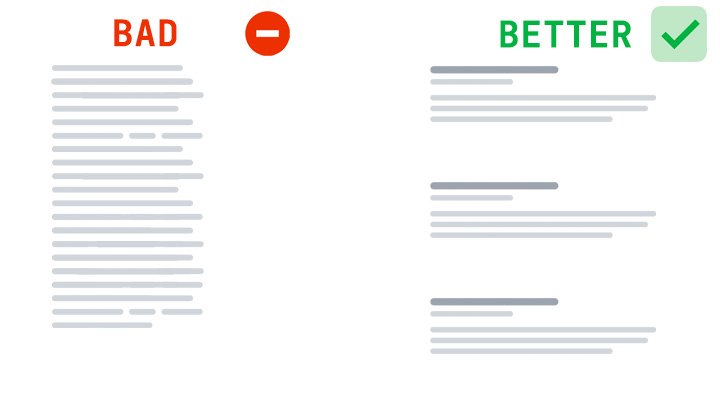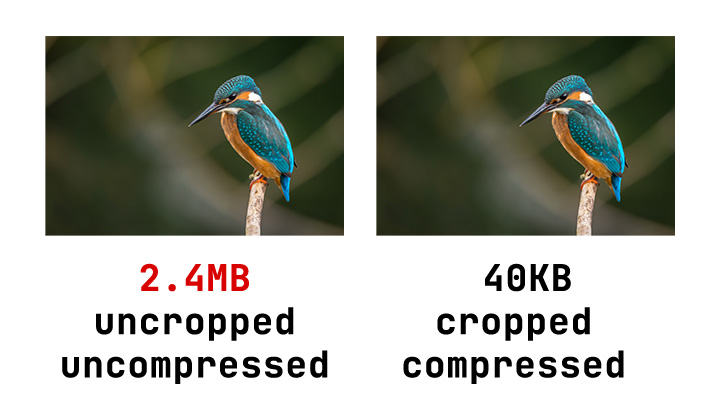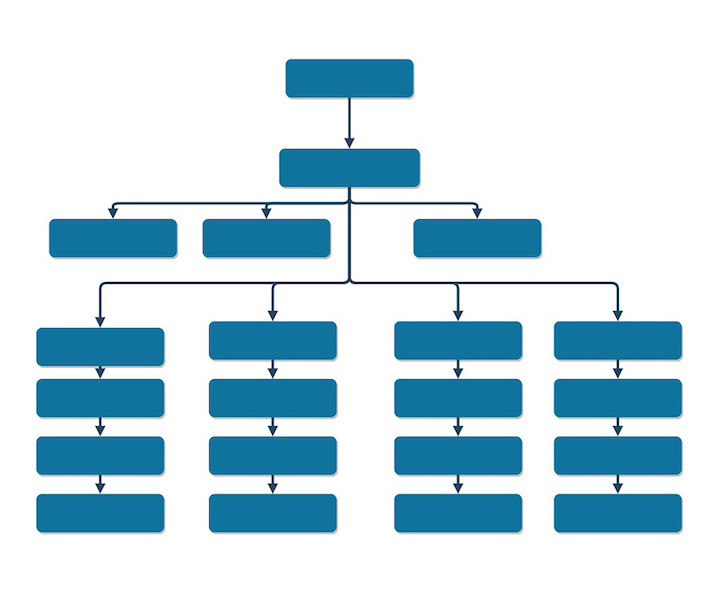Here are some tips to improve your article to attract audience, return readers, improve ranking and increase your reputation.

Write for Human Beings
One of the most important Google metrics to rank is the duration of the visit.
Why?
Having an article written purely for keywords misses the important human touch, thus resulting in readers quickly bouncing away and unlikely to return.
A high bounce rate indicates that the article may not be useful, interesting, or written for people.
Reasons to write for people not robots
-
Personal connection: Content that is written for human readers evokes emotions and empathy, which helps in building a sense of trust and connection with the reader, leading to better engagement and higher chances of sharing the content.
-
Retention and loyalty: Readers are more likely to return to a well-written article that speaks to them and addresses their needs, wants, and questions. This eventually translates to higher reader retention and loyalty.
-
Accessible and shareable: Humans appreciate content that is easy to understand, relatable, and enjoyable to read. Writing for your audience makes it more likely that your content will be shared, and shared content then becomes a testimony to your expertise and success, ultimately leading to wins like opportunities to collaborate and gain recognition.
I am not saying that you should completely forget SEO while writing content, but always prioritize the readers' experience over trying to appease search ranking algorithms.
Quick Tip: Write an interesting and helpful article for your readers, and then add keywords naturally during the rewriting process.
Evergreen Content
Evergreen content refers to articles that are timeless, typically covering topics that will be of interest to readers for years.
Why should you focus on creating evergreen content?
The answer is simple: evergreen content stays useful and relevant for an extended period, unlike non-evergreen content, which can become outdated the moment it’s published. As a result, evergreen content proves to be a smarter investment in terms of time and effort, as you don’t need to continually update or discard it.
Did you know? … that writing evergreen content can significantly increase your website traffic and attract sustained readership over time? According to a study conducted by HubSpot, evergreen articles generate 30% more traffic than non-evergreen articles, even after the initial publication period. (Source: HubSpot, “Why Evergreen Content is the Best Investment You’ll Ever Make,” 2019)
Key to remember: Time is money.
Speed
Imagine writing articles to perfection, only to have all your efforts go to waste due to a slow server. When your website takes too long to load, search engines will not rank it well, and the few readers who do visit your site will leave shortly after.
That is a significant cost to pay.
A fast-loading and mobile-friendly website plays a crucial role for ranking and in retaining readers on your page.
Did you know that a one-second delay can result in a 7% reduction in conversion rates? To avoid losing potential followers for your blog, optimize your website for speed and responsiveness. This includes compressing images, reducing server response time, and using browser caching techniques.
Remember, you only have a few seconds to capture the attention of your audience, so make every moment count.
Make sure to check your speed and any possible problems on official Google Web Performace Tool https://pagespeed.web.dev/ and also submit your websites to https://search.google.com/search-console .
Key to remember: All your effort is useless, if website does not load fast enough.
Clear Writing and Formatting
Having clear and coherent writing in your articles is essential for effectively communicating your ideas and winning over your audience.

Proper formatting is crucial for creating a visually appealing article that keeps your audience interested.
Reader also tend to skim the content. Help them to find the information they need in an easy-to-understand format.
How to format the text?
-
Utilize markdown features such as bold, italic, and bolditalic to emphasize essential messages in your content.
-
Create visually diverse articles using line breaks, bullet lists, block quotes, and other markdown formatting techniques.
-
Write short paragraphs. And give the sentences space to breath.
-
Create headings / sections.
-
Maintain consistency. Use the same font, font size, and spacing to create a cohesive look.
-
Add tables to organize complex details in an easy-to-understand format.
Key to remember: Using unnecessary technical terms, hard to read and scan the content, and intricate language does not improve an article; it simply discourages readers from reading it.
Use Visuals
Incorporating visuals into your articles not only enhances their appearance but also supports your narrative and makes your points more digestible.
Why use images, infographics, embedded videos
-
Enhance Readability: images, infographics, and embedded videos effectively break up long blocks of text, making your content more visually appealing and easy to digest.
-
Simplify Complex Concepts: Visual elements have the power to simplify and clarify complex ideas.
-
Foster Reader Comprehension: Visuals play a crucial role in improving reader comprehension. They provide additional context, support, and examples, enabling your audience to understand the content more effectively.
For example, a blog post about travel destinations could feature stunning photos of popular sights, embedded videos showcasing local culture, and even graphs to highlight tourism trends.
Support Your Claims
Backing up your assertions with credible sources builds trust with your audience and adds credibility to your articles.
Always provide links to reputable sources like research papers, news outlets, or established websites when presenting facts or statistics.
Not only does citing your sources help your readers verify your claims, but it also enhances your reputation as a trustworthy content creator.
How to do it
-
Provide evidence: Support your assertions with trustworthy sources such as research articles, academic papers, statistics, or expert opinions. This enhances the legitimacy of your arguments and ensures that your claims are based on factual information.
-
Use examples: Illustrate your claims with specific examples, anecdotes, or case studies. Real-world examples help make your points more concrete and relatable for readers.
-
Include data: Include relevant data and statistics to reinforce your claims. This can involve data from reputable sources, surveys, experiments, or research. Presenting evidence based on data strengthens your arguments and makes them more persuasive.
-
Quote authoritative sources: Strengthen your claims by referencing statements or quotes from experts, authoritative figures, or reputable organizations. This demonstrates that your ideas are supported by knowledgeable individuals or institutions in the field.
Always use reliable, accurate, and relevant sources to your topic.
Rewrite

To develop the best content possible and captivate your readers, be prepared to revisit and rewrite your articles.
No piece of writing is perfect on the first attempt, so take the time to review, refine, and edit your work to ensure it’s the best version it can be.
How can you improve your content?
Consider feedback from your readers, monitor performance metrics, and keep a lookout for new ideas or developments in your subject area.
By continually updating your material, you demonstrate that you are responsive to your readers' needs and serious about providing them with valuable insights.
Quality over Quantity
This one is straigh-forward.
When it comes to article writing, prioritizing quality over quantity is crucial.
What would you chose? A 10 times rewritten high-quality article or 10 average articles?
Publishing poor content in the hopes of increasing your blog post count won’t help you gain a loyal following or enhance your website’s SEO value and ranking .
Instead, aim to produce in-depth, well-researched content that will truly benefit your readers and keep them coming back for more. The quality of an article to which YOU would return.
Key to remember: Before writing new article, rewrite the old ones by imporing its quality.
Social Proof
Using social proof in your articles is a powerful way to persuade readers that your content is worth their time and attention.
This can be achieved by including testimonials, sharing success stories, or providing case studies.
For instance, when discussing travel destinations, you might incorporate quotes from satisfied visitors or feature images of happy travelers enjoying various attractions.
How cool would be to have a shoutout from a well-known or respected figure within the community.
By showcasing real-life examples of people who have benefited from your advice or tips, you develop a sense of trust with your audience and encourage them to visit the location themselves.
Compelling Headline
An attention-grabbing headline is the first step in drawing readers to your blog post.
It’s essential to craft a captivating title that not only sparks their interest but also conveys what your article is about.
Writing headlines is not an easy task.
So, how can you create compelling headlines?
Leverage power words, lists, numbers, or even ask rhetorical questions to pique curiosity. For example, the most common words to include in the headlines are: how to, what, guide, study, best, new.
But remember to keep it relevant and truthful to avoid disappointment or frustration. A well-crafted headline(often written after the article) will work wonders when it comes to boosting your blog’s click-through rate and overall engagement.
Key to remember: The headline is the first thing visitors see. Make sure it summarizes the content and is interesting enough to encourage them to click and read it.
Update the Article
Regularly updating your articles ensures your content remains fresh and valuable to your audience. It’s like rewritting but after some time and stats from analytics.
This not only keeps your readers coming back for more but also sends signals to search engines that your website is active and up-to-date.
What can you do to keep your articles updated?
- review older blog posts
- fact-check information
- replace outdated data with new statistics
- expand old content
- update visuals and media
Tip: Make sure to display the date of your updated article visibly to visitors and search engines alike.
Optimize Images
Images play a significant role in enriching your articles, but large image files can negatively impact your website’s performance.
Optimize your images to keep the file size small without compromising on quality.
Compressing the quality to 90% is almost undetectable to the human eye.

So, unless you do not need to show the high quality images, use image compression tools and choose the appropriate file formats (such as JPEG for photos and PNG for graphics).
How to optimize images
-
Crop the images: Scale down the dimensions of the image to an appropriate size.
-
Compress the images: Reduce the file size of images without significant loss of quality with image compression tools.
-
Support modern image formats: Add support for formats like webp or avif.
-
Lazy load: Implement lazy loading for images, which means that images are loaded only when they come into the user’s viewport.
By optimizing your images, you not only ensure a smooth and fast-loading user experience but also improve your site’s chances of ranking higher in search engines.
Use Active Voice
When it comes to writing, using the active voice keeps your content engaging and direct. Active voice allows you to convey your ideas with more authority and conviction.
Active voice alse creates clear, concise sentences that resonate with your readers, helping them better understand your message.
In contrast, passive voice may sound ambiguous and detached; more like a robot.
Example:
-
Passive voice: “The article was written by Sarah.”
-
Active voice: “Sarah wrote the article.”
By consistently using active voice, you’ll foster a more compelling, approachable tone that appeals to your audience.
Short Paragraphs
Short paragraphs are key to creating visually appealing content that maintains your audience’s attention.
Long blocks of text can be overwhelming and deter readers from continuing with your article.
How can you keep your paragraphs short, easy to scan and understand
-
Focus on a single idea: Each paragraph should revolve around a single main idea or point.
-
Limit sentence count: Keep your sentences concise and avoid excessive complex structures.
-
Break up long paragraphs: If you notice a paragraph becoming too lengthy, consider breaking it up into smaller paragraphs.
-
Use subheadings or bullet points: Use subheadings or bullet points to present information and digest the content more easily.
-
Edit and revise: After writing, review your paragraphs and look for opportunities to trim unnecessary words or phrases.
Key to remember: Keep it simple and let the text breathe.
Bullet Points, Numbered Lists
Bullet points and numbered lists are useful tools for presenting information in an organized, easily digestible manner.
They help break up large chunks of text and improve readability for your audience.
Consider using them to enumerate steps in a process, list suggestions, or highlight important aspects of your topic. Lists also greatly help to scan the text.
Address Counterarguments
Effectively addressing counterarguments in your articles adds depth and nuance to your content.
Presenting alternative perspectives and refuting them with evidence or well-reasoned explanations showcases your expertise and opens up a dialogue with your audience.
Why should you address counterarguments?
Doing so demonstrates that you are open-minded, fair, and unafraid to tackle challenging aspects of your subject matter. Counterarguments allow you to engage in discussions with your audience, leading to personal improvement in the subject matter and fostering greater interaction with your readers.
This approach helps build trust and credibility with your readers, making your content more persuasive and interesting.
Cheatsheet
Creating a cheatsheet for your article provides your audience with a handy reference they can easily refer back to.
A cheatsheet can be a quick recap of crucial points, a collection of tips, or a simplified explanation of complex concepts.
Cheatsheets offer additional value to your readers, making your content stand out and ensuring they keep coming back to your website.
By offering your audience something tangible to take away from your post, you boost the overall appeal and usefulness of your content.
Quick Tip: You can also make downloadable print-friendly PDF files, create a banner to share on social networks or text version for mail.
Links: Internal and External
Strategic use of internal and external links can have a significant impact on your website’s SEO performance and user experience.

Why is linking essential?
Internal links help users navigate your site, guide them to related content, and establish an information hierarchy.
External links, on the other hand, provide your readers with relevant resources and demonstrate that your content is well-researched.
Moreover, linking to authoritative sources can boost your credibility and improve the chances of earning backlinks from other sites. When creating your blog post, be sure to include a mix of both internal and external links to enhance its value and functionality.
Quick Tip: When possible, link to authoritative sources such as government websites, academic institutions, or reputable sources like Wikipedia.
Quick Tip 2: When linking externally, ensure that you use rel="noopener noreferrer nofollow" to prevent passing ranking authority.
Summarize
Offering a summary of your article’s main points or conclusions enables your readers to quickly grasp the essence of your content. It also allows them to reflect on the key takeaways before leaving your page.
A well-crafted summary provides clarity and helps reinforce your message, ensuring that your readers remember your advice, insights, or suggestions long after they’ve finished reading your article. Incorporate summaries within your body text, or as a wrap-up at the end of your post to enhance your content’s value.
Quick Tip: If you have a longer article, make sure to add Table of Contents that improves navigation.
I hope you find these tips and techniques valuable for optimizing your articles and creating engaging content. If you have any other questions or need further assistance, please do not hesitate to reach out.